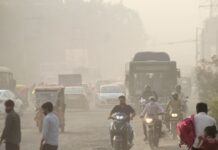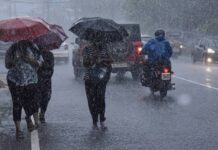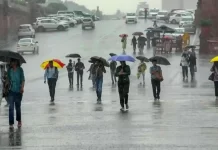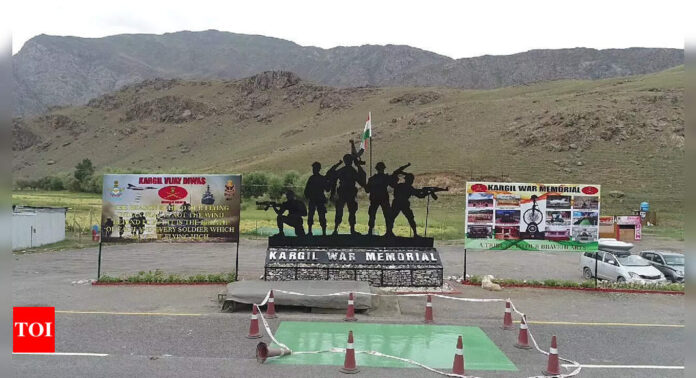As much as it was against Pakistani soldiers, India’s triumph in the Kargil War came at the expense of the environment and weather. We describe the difficult circumstances that our soldiers faced in Kargil and how they overcame them.
On the occasion of the 24th anniversary of the Kargil Vijay Diwas, leaders from all political parties in India paid their respects to the country’s armed services and the martyrs who have sacrificed their lives.
Speaking at the Kargil War Memorial in Ladakh, Defence Minister Rajnath Singh lashed out at Pakistan for the conflict and recalled the sacrifices made by Indian soldiers.
“We are aware that no one will dare to look towards India as long as you are defending us at the borders. Your gallantry has occasionally made the nation proud, not just in Kargil but on other occasions since independence until now, he remarked in his speech.
India was made to fight in the Kargil conflict. At the time, India had attempted to resolve the difficulties with Pakistan through dialogue; the minister later said, “We are being betrayed by Pakistan. The Indian Army “sent a message during Operation Vijay that when it comes to our national interests, our Army will not back down at any cost, not only to Pakistan but to the entire world,” the minister said.
The War in Kargil
On July 26, 1999, the final Pakistani soldiers and infiltrators were driven from their positions along the Indian side of the Line of Control (LoC), signalling the end of the Kargil War.
Infiltrators from Pakistan breached the Line of Control and took up position in the Kargil district of Ladakh, sparking the battle. The infiltrators were initially suspected to be jihadis when they were first reported to the Indian Army on May 3. But during the course of the first few weeks, when the invasion’s true scope came to light, the Pakistani state’s involvement became clear.
In spite of suffering significant casualties and facing numerous logistical and strategic challenges between mid-May and July, Indian forces gradually retook key positions from the Pakistanis. On July 26, the army announced that all Pakistani regular and irregular troops had left Kargil.
According to official statistics, there were 527 fatalities, 1,363 injuries, and 1 prisoner of war (Fl Lt K Nachiketa, whose MiG-27 was shot down during a strike mission) among Indian casualties at the end of the war.
The Indian military faced numerous difficulties during the Kargil War. On the one side, there were the intruders from the enemy, who were well-armed and assisted by continuous artillery fire from Pakistan. On the other side, there were Kargil’s actual conditions.
In his dissertation “High Altitude Warfare: The Kargil Conflict and the Future” (2003), US Army officer MP Acosta stated that “the high altitude environment determined the nature of the conflict and shaped the conduct of the campaign.”
Kargil is situated at the northernmost point of the LoC, some 230 kilometres west of Leh and 200 kilometres northeast of Srinagar. While the elevation of the town of Kargil is 2,676 metres (8,780 feet), that of Dras is 3,300 metres (10,800 feet), and that of the nearby peaks ranges from 4,800 metres (16,000 feet) to 5,500 metres (18,000 feet).
These are exceptionally high altitudes that present both logistical and strategic difficulties as well as negative physiological consequences on human health.
The author, Acosta, stated that “the combination of thin air, chilly weather, and rugged mountains has dramatic effects on men and their equipment.”
The incapacitating cold is first. The Kargil battlefield is located in a frigid desert where winter lows can reach – 30 degrees Celsius. Even though the summers are nicer, the battlefield is still very uninviting due to the frigid winds and desolate surroundings. Both men and machinery are affected by the cold; for example, weapons jam and their operators have to work very hard to stay warm.
Reduced oxygen levels in the air, which can lead to a variety of physiological impacts and illnesses, some of which are potentially fatal, are another difficulty posed by high altitudes. Acute mountain sickness is the most typical altitude-related disease and is characterised by headaches, nausea, loss of appetite, weak muscles, and general exhaustion.
Low air pressure also affects personnel and affects how well weapons and planes work and are accurate. Lower air pressure extends the bullets’ range, but accuracy and predictability are compromised. Engine power normally decreases with altitude, and helicopter rotor efficiency declines.
Last but not least, the geography itself determines military tactics and places severe limitations on soldiers. The terrain restricts movement, frequently gives the adversary cover, and determines the range of an operation. The enemy maintained high locations during the Kargil War that allowed them to see the Indian Army’s positions, which put them at a distinct disadvantage.
“An army may be forced to take the hill when faced with a foe on commanding heights.” Acosta penman. The Indian army carried out such action. The Indian Army gradually but unmistakably cleared the Pakistani invaders from the peaks despite constant enemy fire and harsh terrain.
The Army and the Air Force both learned that they were unprepared for such high-altitude fighting on this scale during the early phases of the War, which provided them with some important lessons. Altitude sickness affected a lot of the soldiers, even taking some lives. Another obstacle was the absence of fighting gear in such chilly conditions. However, the topography and Pakistan’s relentless shelling of the vital NH 1A created significant logistical difficulties.
The Army eventually changed its strategies to solve these difficulties. Programmes for acclimatisation and training were started by the units to better get the soldiers ready for the environment. Better cold-weather gear was acquired, albeit the Army didn’t have it all the way through the War. Further refinement of high-altitude assault methods took place. Attacks shifted away from daytime frontal assaults and more frequently involved small groups climbing nearly vertical terrain.
“Most significantly, the Army combined audacious tactics with overwhelming firepower. All attacks were preceded by heavy artillery bombardment, Acosta reported. Due to the altitude and terrain’s constraints on providing air cover for the ground forces, the Army eventually relied primarily on artillery, particularly the contentious Bofors gun, which range nearly doubled in Kargil’s thin air.










































